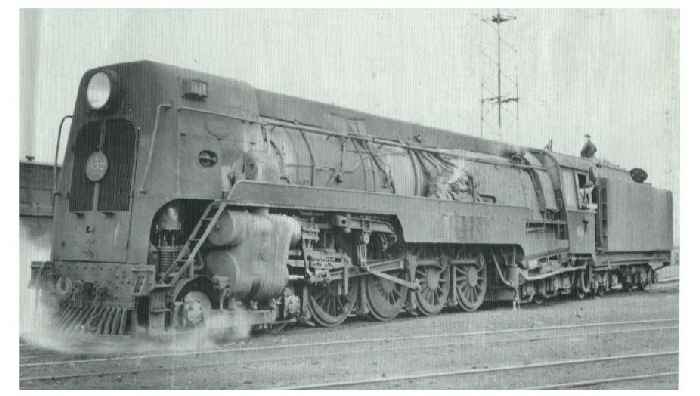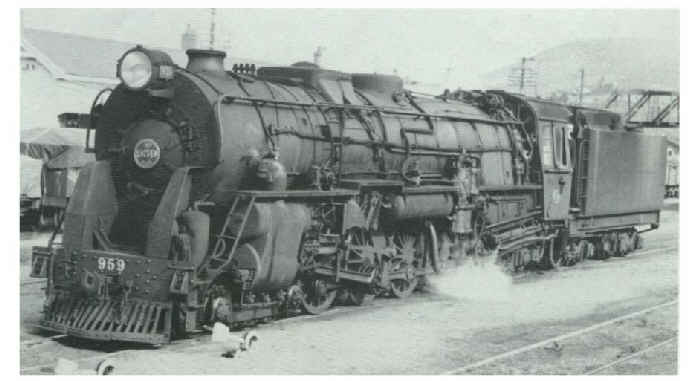Introduced: 1939
Number in Class: 35


Locomotive Specifications
|
|
| Engine Weight: 93.0 tons |
Tender Weight: 52.9 tons | Total Weight: 145.9 tons | Adhesive Weight: 56.4 tons |
| Length over Buffers: 69' 8" |
Total Wheelbase: 61' 10½" |
Engine Wheelbase: 34' 10" |
Coupled Wheelbase: 14' 3" |
| Tender Wheelbase: 18' 2½" |
Driver Wheel Dia.: 54" | Cylinders HP: Two - 20" x 26" |
Cylinders LP: |
| Grate Area: 47.7 sq ft | Evaporative Area: 1933 sq ft |
Superheated Area: 485 sq ft |
Working Pressure: 200 psig |
| Tractive Effort: 30815 lbs f |
Coal Capacity: 7.5 tons | Oil Capacity: 1570 gals | Water Capacity: 5000 gals |
|
Remarks:
As a result of experience with the 'K' class, the 'Ka' became the logical development and several new features were incorporated in the design.
Roller bearings were applied to all axles on both engine and tender, and frames were cut from high-tensile steel. An A.C.F.I. feedwater heater was fitted to the first thirty engines and
these were fitted with a metal shroud designed to conceal the heater equipment mounted on the smokebox.
The running boards and boiler top were also provided with panels to conceal as much of the pipework as possible.
The total effect gave these locomotives a semi-streamlined appearance.
After World War 2, the feedwater heater was substituted by exhaust-steam injectors and the shrouding was removed.
The performance of these 1400 h.p. locomotives was outstanding in all passenger and freight services and were well-liked by their engine crews. All Ka class engines were converted to oil burning between 1947 and 1953, and finally they succumbed to dieselisation. |
|
Mainline Steam, Auckland - Ka 942 "Nigel Bruce", NZR Hutt #325/1940 Operational. Steam Inc., Paekakariki - Ka 945, NZR Hutt #328/1941 Stored |